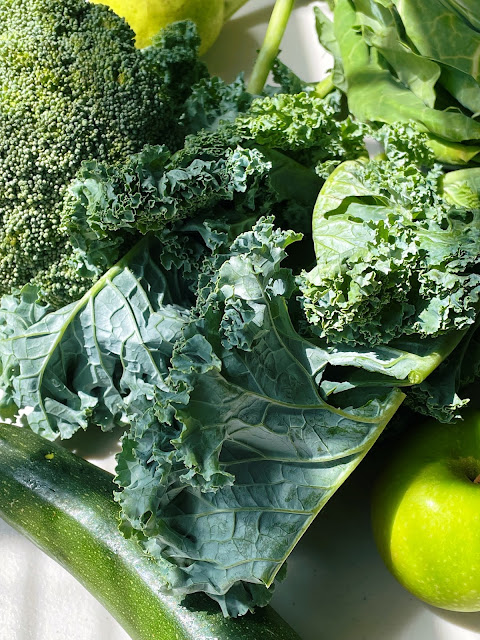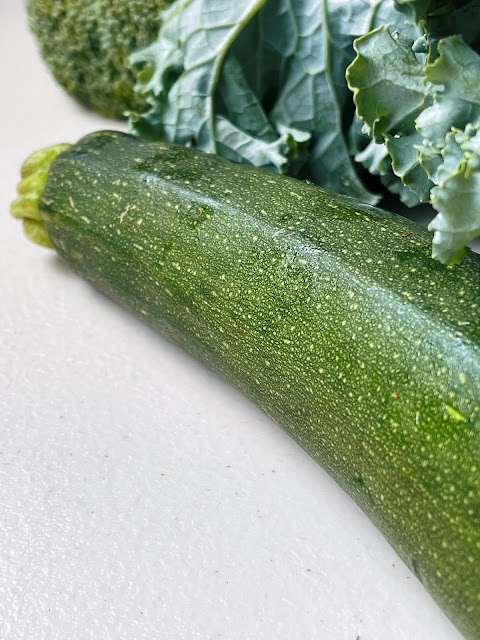Ever since I started posting about my dogs' raw meals, I have gotten countless messages about what kind of vegetable mash I feed them, what sort of fruits and vegetables are safe for dogs, how do I prepare and feed fruits/vegetables to my dogs etc...
I have not made a "veggie mash" until now because all of my raw recipes are balanced following NRC guidelines, so when I do include a little bit of vegetables for added fiber, it's usually just one or two types of veggies that have been boiled and not always puréed. Recently, I have liked the idea of preparing multiple vegetable blends that I can rotate between meal preps for my dogs because I felt like it would be a much better way to get them to eat more variety and reap the benefits of the antioxidant & phytochemical contents.
As shared in my previous post (FERMENTING RAW NUTS & SEEDS + THEIR PROVEN HEALTH BENEFITS (PUMPKIN SEEDS):
Phytochemicals are molecular compounds found within plants that provide colour, smell, taste, and often also serve as chemical defences of the plant against fungi, bacteria, viruses, and animals attempting to consume them. There are different classes of phytochemicals and many of the known classes have been able to demonstrate a wide range of health benefits.
A Harvard Health post in 2019 listed the following phytochemical classes:
● Carotenoids in red, orange, yellow, and green plants (cooked tomatoes, carrots, squash, and broccoli) may inhibit cancer growth and cardiovascular disease and boost immunity.
● Flavonoids in berries, apples, citrus, onions, soybeans, and coffee may fight inflammation and tumour growth.
● Anthocyanins in berries and red wine are associated with lower blood pressure.
● Resveratrol in red wine, grapes, dark chocolate, and peanuts is associated with longevity in some animals.
● Proanthocyanidins & Flavanols in grapes, apples, cocoa, and red wine are linked to better function of the lining of the arteries and reduced blood pressure.
● Sulfides & Thiols in onions, garlic, leeks, olives and scallions may help decrease "bad" LDL cholesterol.
● Isothiocyanates (sulforaphane) in cruciferous vegetables such as broccoli, cabbage, and kale may help protect us against cancer and cardiovascular disease.
● Quercetin in apples, onions and citrus fruits may help decrease inflammation and blood pressure.
● Terpenes in cherries and citrus fruits may help slow cancer cell growth and fight viruses.
● Lutein and Zeaxanthin in dark, leafy greens are linked to eye health.
(not all foods mentioned are safe to feed to dogs)
For this batch of green vegetable mash, I used what I was able to purchase locally!
I did not follow a recipe for this, I just used what was available to me and this is what I will continue to do whenever making veggie mash for my dogs.
HOW DO I PREPARE FRUITS AND VEGETABLES FOR OPTIMAL ABSORPTION FOR DOGS?
For non-starchy foods, you can simply purée these vegetables and fruits raw. For starchy foods like squash (including pumpkin), carrots, beets etc, you want to cook those thoroughly before feeding them to your dog.
Additionally, you can also cook AND purée all fruits and vegetables before feeding them to your dogs. The more you break down those cell walls, the easier it will be for your dogs to digest the plant matter and absorb any bioavailable nutrients.
INGREDIENTS
- 1 bunch of Kale
- 1 bunch of Collard Greens
- 1 bunch of Asparagus Tops
- 1 head of Broccoli
- 1 large Cucumber
- 1 Green Apple
- 1 Green Pear
- 1 Green Zucchini
- Homemade Bone Broth (optional; for blending)
INSTRUCTIONS
1. Wash/clean all product!
2. Slice and core any fruits that have seeds or a pit. You do not want to feed those to your dog!
3. Set a large pot(s) of water to boil on your stove.
Alternatively, you can steam your vegetables or bake them in the oven.
4. Place all your vegetables in a pot(s) or tray(s) to thoroughly cook them.
As mentioned previously, you do not HAVE to cook AND purée all of your green vegetables, I just prefer to do it this way. You do not need to peel your zucchini or fruits.
5. Using a blender or food processor, purée your fruits while the vegetables cook.
I added my sliced apple and pear to my BlendTec, with a splash of bone broth.
6. Empty your puréed fruits into an extra large bowl.
7. Once your vegetables are cooked through (I usually like to overcook them for the dogs) and have cooled down enough, add them to your food processor or blender.
I dumped my cooked vegetables into my BlendTec with more bone broth for this step.
8. Add your puréed vegetables to the same extra large bowl you poured the puréed fruit into for step 6.
9. Mix your veggie mash thoroughly!
10. You can store your veggie mash by portioning them into appropriately sized containers and freezing for future meal preps, or you could pour your vegetable mix into silicone moulds and freeze (this just takes much much longer).
CLICK IMAGE TO VIEW 30 SEC VIDEO TUTORIAL REEL / TIK TOK
Hope this was helpful!


















Post a Comment
Note: Only a member of this blog may post a comment.